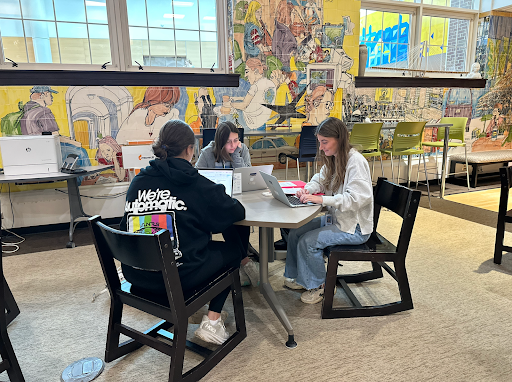This fall, I broke my fourth metacarpal bone in my hand– three ways. Although I knew a broken hand was not the worst case scenario, the injury would require immediate surgery and make me unable to perform and dance full out for the majority of my fall dance season.
From the moment I broke my hand, I went through a wide range of different emotions, specifically struggling on how I could contribute to the team and improve without being able to dance. I worried about disappointing my teammates, coaches, and myself.
Today, I wholeheartedly believe that without the support system that I had, I wouldn’t have been able to both make the most out of my injury and recover as confidently and quickly as I did.
It takes a significant amount of mental resilience to stay positive during a time where it feels that all of your hard work has been interrupted. For me, that is when my support system came into play.
When I returned home after my surgery, flowers had been delivered to my house, signed by my dance team. Some of my best friends also brought cards and gifts to my house as well. These small actions reminded me that not only was I not alone, but nobody was disappointed in me.
According to Hopkins Medicine, benefits of having a support system is “reduced stress, decreased physical health problems, and improvements in emotional well-being.” I found leaning on my friends took my mind off of the negatives of my situation and helped me focus on the challenges right in front of me.
By understanding the reality of the situation and changing my mindset, I was able to give my all to the activities I was cleared to do. For example, I may not have been cleared to perform or do any high impact workouts or skills, but I was able to work on technique, leg strength and my mindset.
I recommend this for anyone struggling with an injury, specifically in a sport: amplify what you’re able to do and set goals.
Setting goals kept me accountable for my physical therapy exercises and made it easier to track my progress. With one ultimate goal in mind, I was able to set smaller goals for myself. These small goals included keeping up with my physical therapy exercises, improving my hand motion and strength, and doing drills for dance skills outside of practice.
According to a study posted in the Journal of Physical Education and Sports, goal setting resulted in a quicker recovery. They also found setting goals was directly related to “greater treatment adherence, greater adherence to rehabilitation sessions and compliance with homework, high scores on self-satisfaction and self-efficiency, and a high percentage of athletes who achieve their self-selected functional goal.”
My friends, teammates, and family were constantly checking up on me. Honestly, I was surprised by the reactions to a broken hand. I received letters from distant relatives and my close friends helped out making tasks easier.
Looking back at my injury, it taught me multiple lessons about myself. First, setting goals proved to be an effective way to stay motivated and confident coming back into dance. Second, my support system helped me not focus on the negative and remind me that injuries happen. Lastly, it reminded me to be grateful for my best friends and family.








